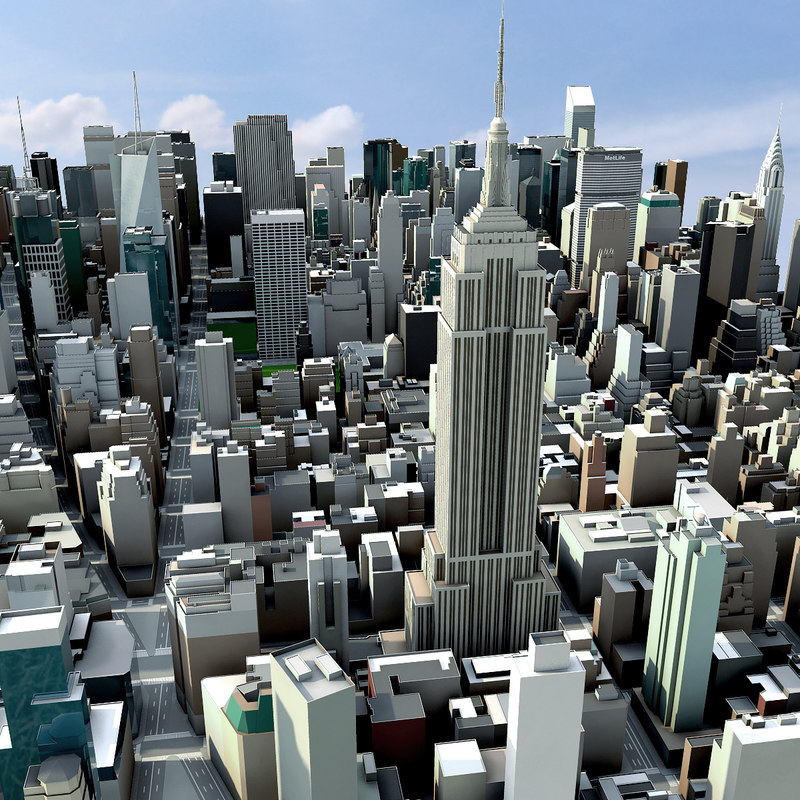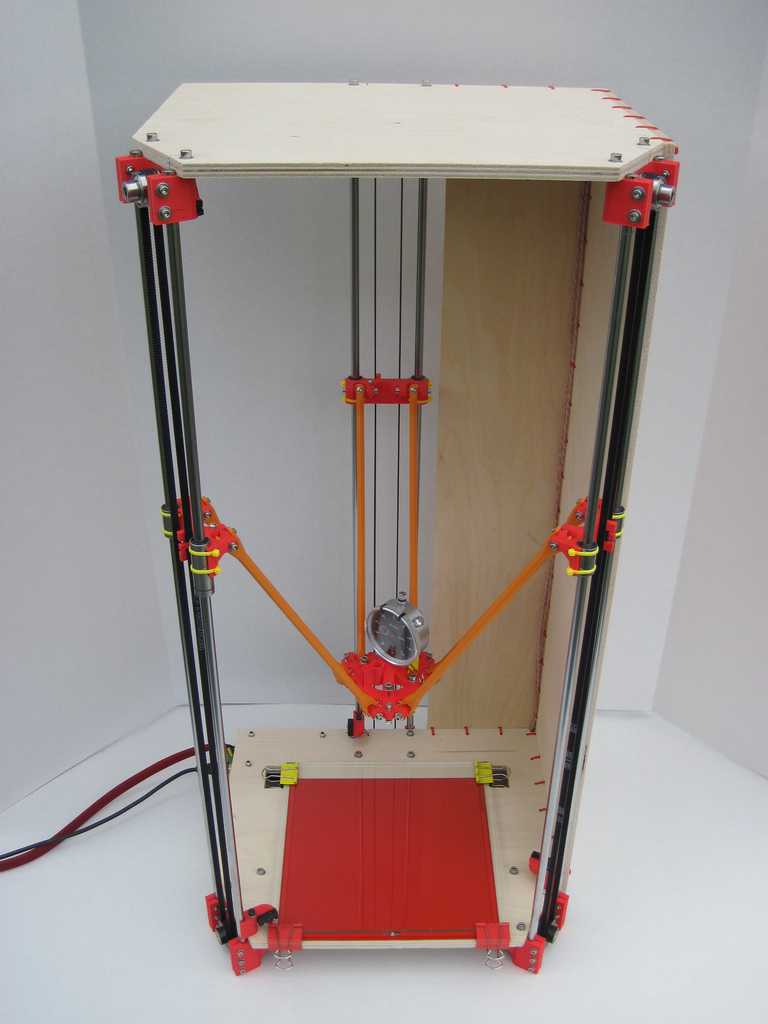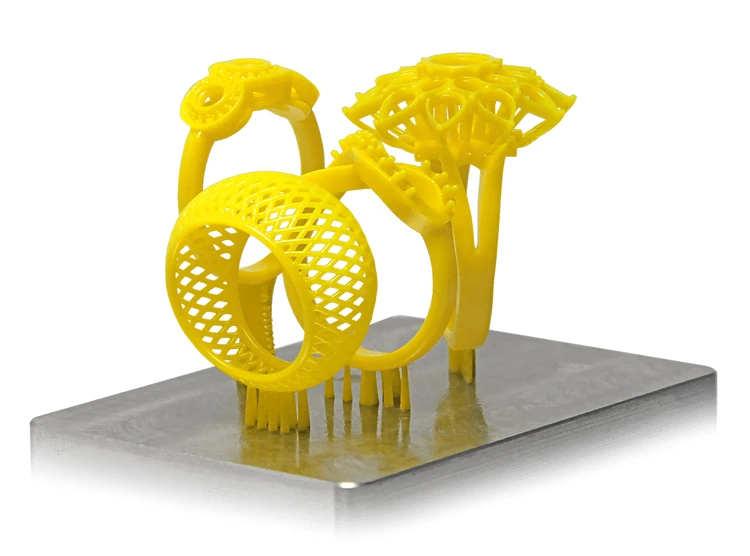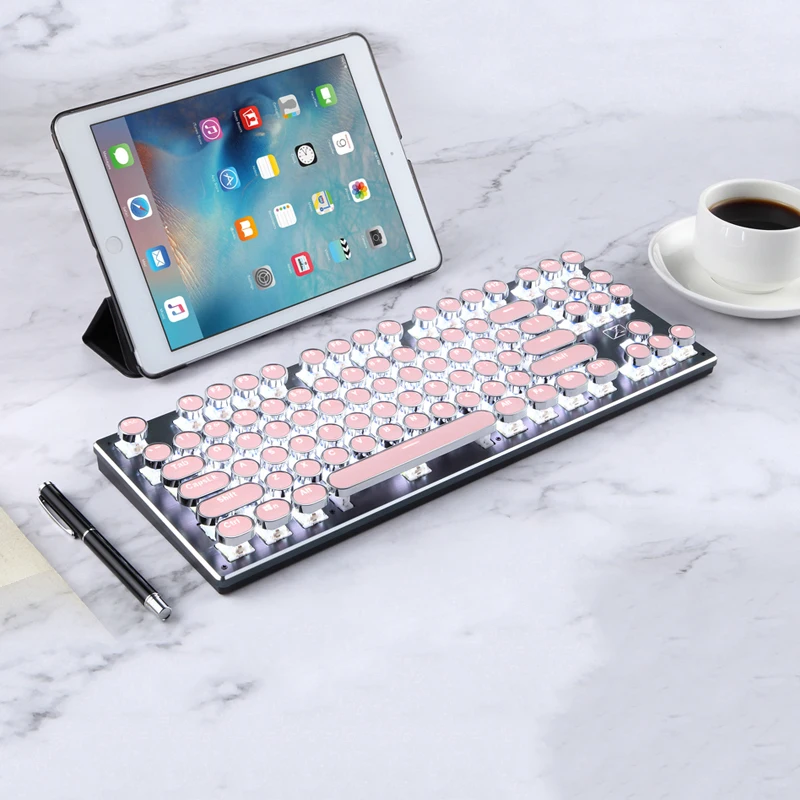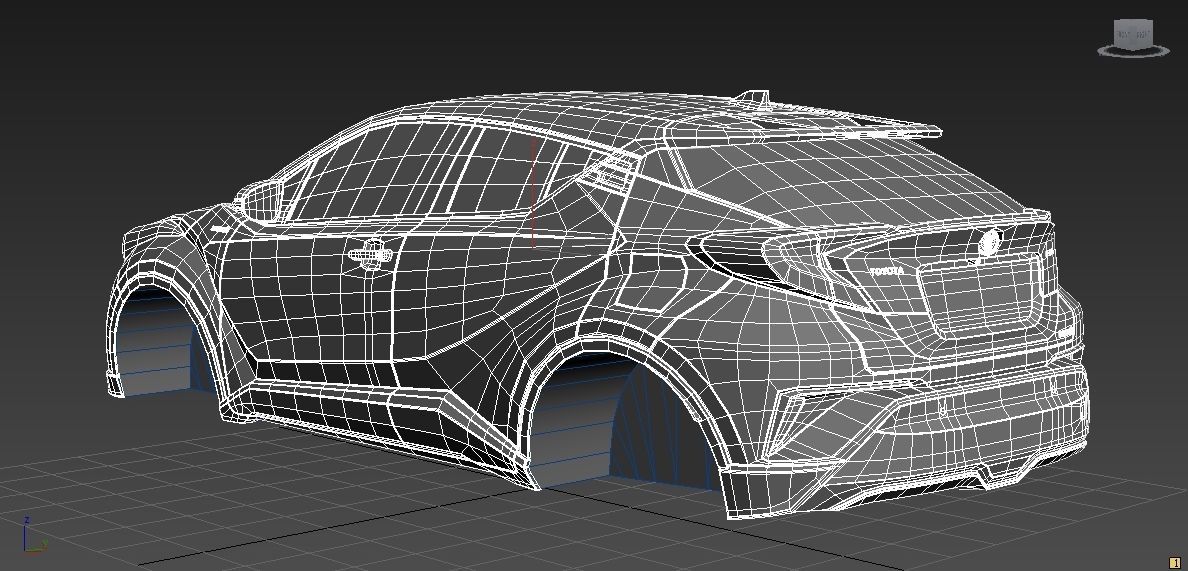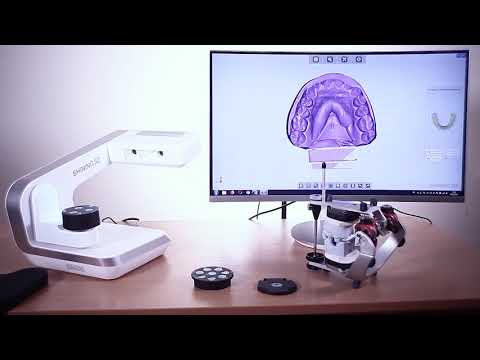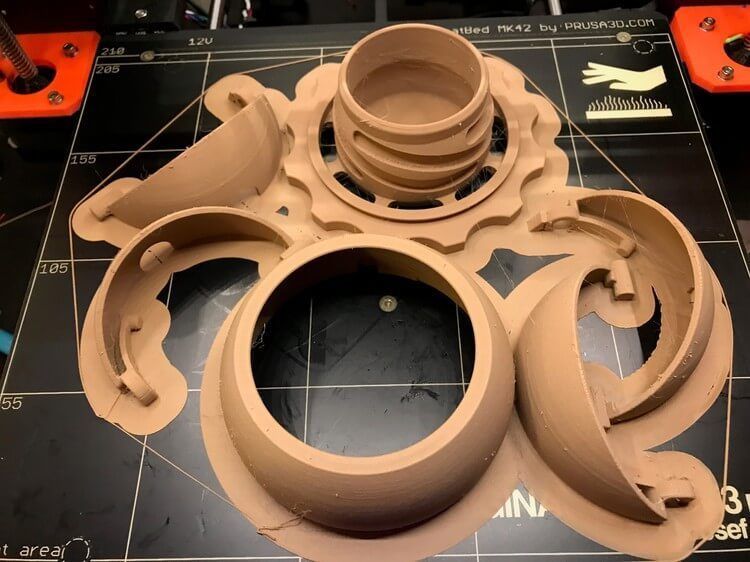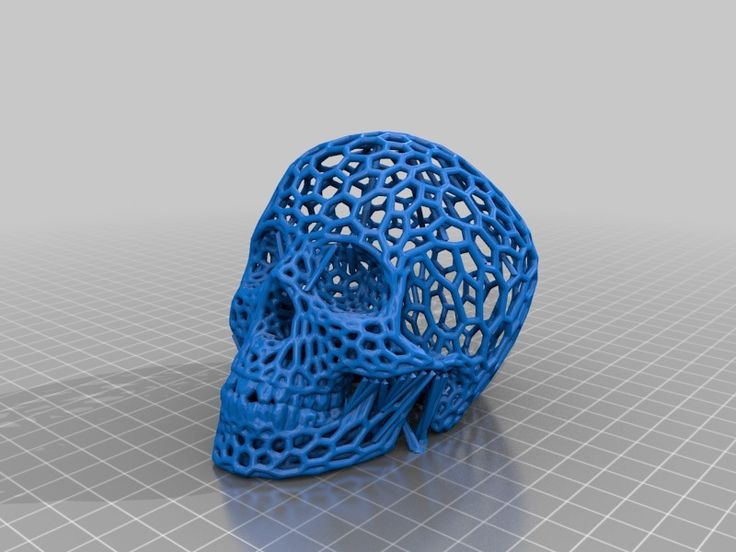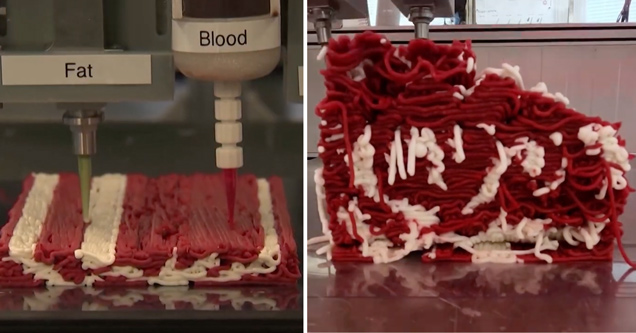Inventor 2 3d printer
Flashforge Inventor / Dual Head 3D Printer NEW
THIS PRODUCT IS END OF LINE AND NO LONGER FOR SALE
The 3D Printer Superstore is proud to announce the global release of the Flashforge Inventor 2017. This latest design is a further development of the Highly acclaimed Flashforge Dreamer Series of 3d printers which includes an increased build volume and enhanced features. These include a larger build volume by increasing the build height by 20mm. The build size is now 230 x 150 x 160mm. New technology includes a on-board camera to monitor your 3d prints from any mobile device. Also an pause/ auto restart feature has been included if power is cut from your 3d printer.
The all new Flashforge Inventor 2017 can print large 230 x 150 x 160mm models
The new Flashforge Inventor for 2017 now includes a camera so you can monitor your 3d prints from mobile devices
Temperature modulation sensors and 5 fans air circulation for superior print quality.
The Flashforge Inventor includes temperature sensors that monitor the internal temperatures of the build chamber. The printer intelligently controls air flow with 5 separate fans to stabilise temperatures, control warpage and maximise print quality based on the various requirements of the filaments used.
This 3D Printer has become available thanks to open source technology. With an improved design and at less than two thirds the price of the original, it is the best value fully capable Dual Head 3D printer on the market.
Flashforge have developed their own easy to use 3D printer software - Flashprint which can generate gcode files or send directly to the printer via USB or SD Card. You may also use open source and third party 3D Printing slicing software with the FlashForge Inventor such as Simplify3D.
The Flashforge Inventor is a high performance, easy to use 3d printer and offers excellent value. Flashforge is fast becoming the largest 3D printer company in China for good reason!
The Flashforge Flashprint 3D Printing software that comes standard with these printers has seen a number of advancements. Although being very easy to use, it now includes some of the most advanced features that we have seen in 3d slicing programs. You can now generate your own custom support structures. Let the software automatically generate them, or add and subtract them at will.
Although being very easy to use, it now includes some of the most advanced features that we have seen in 3d slicing programs. You can now generate your own custom support structures. Let the software automatically generate them, or add and subtract them at will.
The Flashprint 3D Slicing software will now automatically build tree like support structures, plus you can build your own with just a few clicks. This powerful feature is especially ideal for creating support structures for Resin 3D Printers such as the up and coming Flashforge DLP Explorer.
With further improvements from the original design including improved electronic circuitry, a higher 0.1mm Z resolution, a refined MK10 print head and the addition of a cast aluminum heated build platform, allowing for printing in ABS and PLA plastic.
The left print head is optimised for PLA with integrated fan, whilst the right extruder is optimised for ABS
If this is not the best value low cost dual head 3D printer on the market, let us know, because we want to know about it!
Fully Enclosed-
The Flashforge Inventor is fully enclosed and includes a tempurature sensor combined with dual extraction fans. This enables the 3d printer to control internal temperatures of the enclosure, controlling cooling and optimising cooling rates for different printing materials which improves print quality, and significantly reducing warping of printed parts.
Improved Heated Build Platform-
The Flashforge Inventor includes an improved 6.3mm aluminum heat bed which has great flatness and a more even heat distribution, enabling more precise prints and better part adhesion. This platform can be heated up to 120℃, enabling the printer to print in ABS an HIPS plastic. Additionally the head be now includes an 3 point bed leveling system which simplifies the calibration the build platform. The Z axis has also been improved with increased rigidity and improved print quality, now with 10mm Z-axis Rods & Metal Supports.
Improvements to the 2017 edition of the Flashforge Creator Pro include a solid cast aluminum heat bed and 10mm Z axis rods.
The MK10 Dual Extruder Head-
The MK10 extruder head is suitable for printing PLA, PVA, ABS, HIPS, Flexible and new materials such and metals filled. It includes spring loaded tensioner, ensuring optimal reliability of the filament feeding mechanism. It incorporates a quality Nema stepper motor, polyoxymethylene injection molded and CNC machined aluminum parts as well as roller bearings for smooth axial motion and low friction teflon tubing, ensuring quality and reliable printing.
Dual print heads enpower the creativity by enability the production of two colour parts. Additionally the second print head can be used to print soluble support structures. No more cleaning up of complex supports inside internal cavities, now you can print in water soluble PVA, Lemonine soluble HIPS or Caustic soda soluable PLA.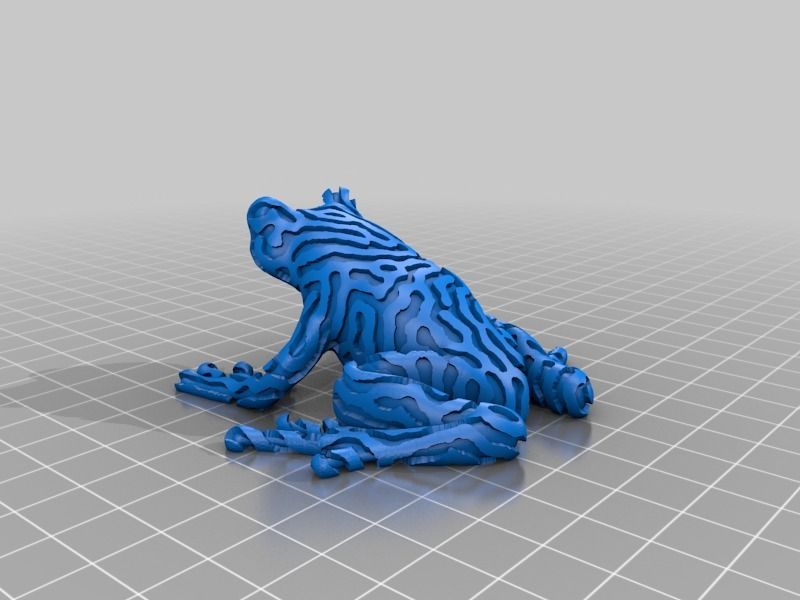
Two Heads are better then one- The Flashforge Inventor can print two colour parts and soluble support structures.
The compact design of the Flashforge Inventor has the filament spools located inside the machine. The rear panel includes dual extraction fans which are used to regulate interior temperatures.
Whats in the Box-
Fine Detailed Printing-
When it comes to 3D printers, the proof is in the print quality. This is where the Flashforge Inventor 2017 3D printer delivers. No other printer gives you so much performance for such a small price tag. This is the best value low cost printer on the market today!
Downloads-
Flashforge Inventor User Manual pdf
Latest Software and Firmware
Specifications-
| Print volume / build size (X,Y,Z) | 5.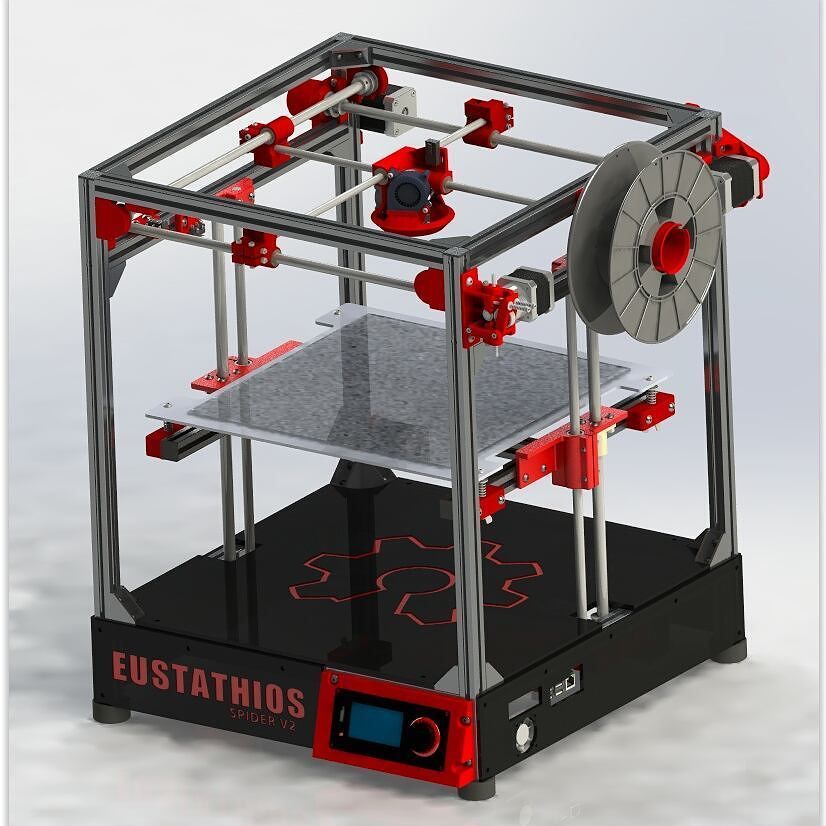 5 litres(230x 150x160) 5 litres(230x 150x160) | mm |
| Frame size (X,Y,Z) | 476x332x383 | mm |
| Resolution (Z-AXIS) | 0.1 - 0.3 | mm |
| Accuracy (Theoretical positioning resolution) | Z axis 0.0025, XY axis 0.011 | mm |
| Print Speed | 40-150 | mm/sec |
| Total mass | 13.5 | kg |
| Nozzle diameter | 0.4 | mm |
| Nozzle Flow Velocity | 24 | cc/hr |
| Recommended Nozzle Temp | 230 | ℃ |
| Filament Diameter | 1.75 | mm |
| Filament Material | ABS, PLA, PVA, HIPS, Nylon etc | |
| Slicing Software | Flashprint / Simplify3d (optional) | |
| OS Support | Windows 7, Linux, Mac OX | |
| Print without PC | Yes with SD card (included) or USB link | |
| Heated Bed included | Yes up to 120 | ℃ |
| Power Consumption | 220V, 350W | |
| Extruder Heads included | 2 | |
| Comes with 6 Months Extended Replacement Parts Warranty | ||
Inventor 2 Parts | Partsbuilt 3D
Use the filter box below to narrow down the Inventor II parts you are looking for:
Sort By: Featured ItemsNewest ItemsBest SellingA to ZZ to ABy ReviewPrice: AscendingPrice: Descending
Products Per Page: 812162040100
Columns: 1 2 3 4 6
-
Add to Cart
10mm Flange Bearing - Dreamer, Inventor, Guider, E3 Pro | Flashforge
Flashforge
Now: $2.
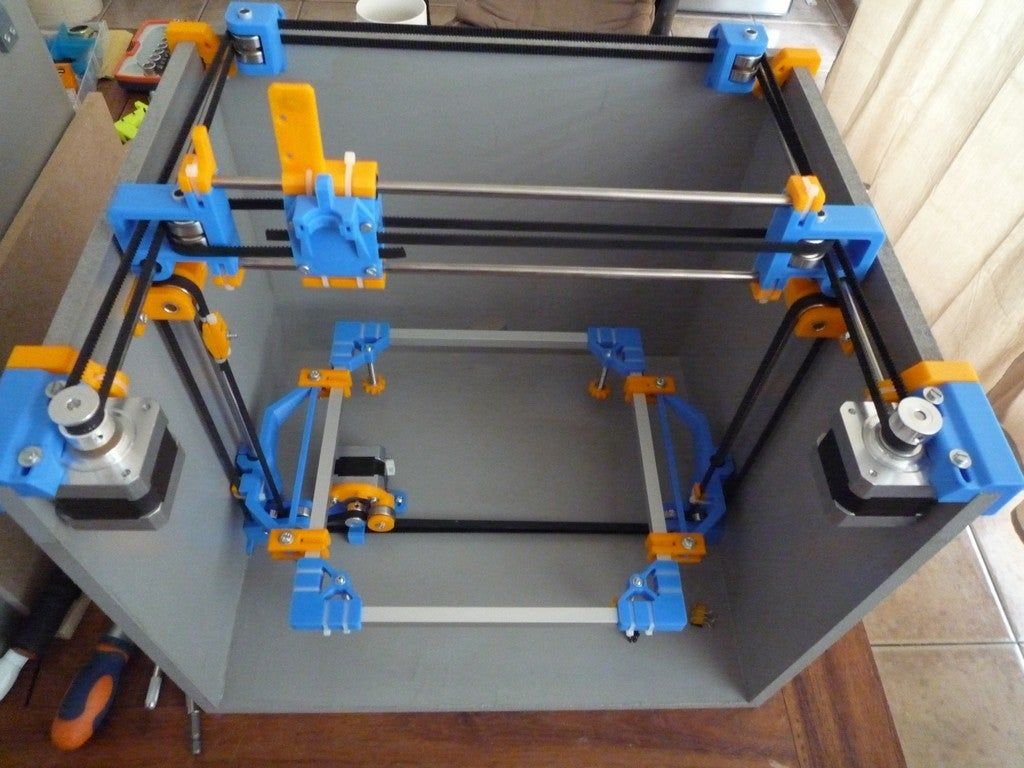 99
99Flashforge Flange Bearing Includes: Flange bearing (1 pcs) Size: 10mm Fits:DreamerDreamer NXInventorInventor 2Guider 2Guider 2S HTRobo E3 Pro
-
Add to Cart
3D Print Removal Tool - Scraper
Flashforge
Now: $3.99
Flashforge 3D Print Removal Tool Spatula for removing 3D prints from the build surface. This is the same tool that is provided with many of the new Flashforge 3D printers. Includes: Spatula (1 pcs)
-
Add to Cart
Air Duct (for Print Cooling) Guider 2, Inventor 2 | Flashforge
Flashforge
Now: $9.95
Flashforge Extruder Air Duct Fan shroud directs air to the part being printed.
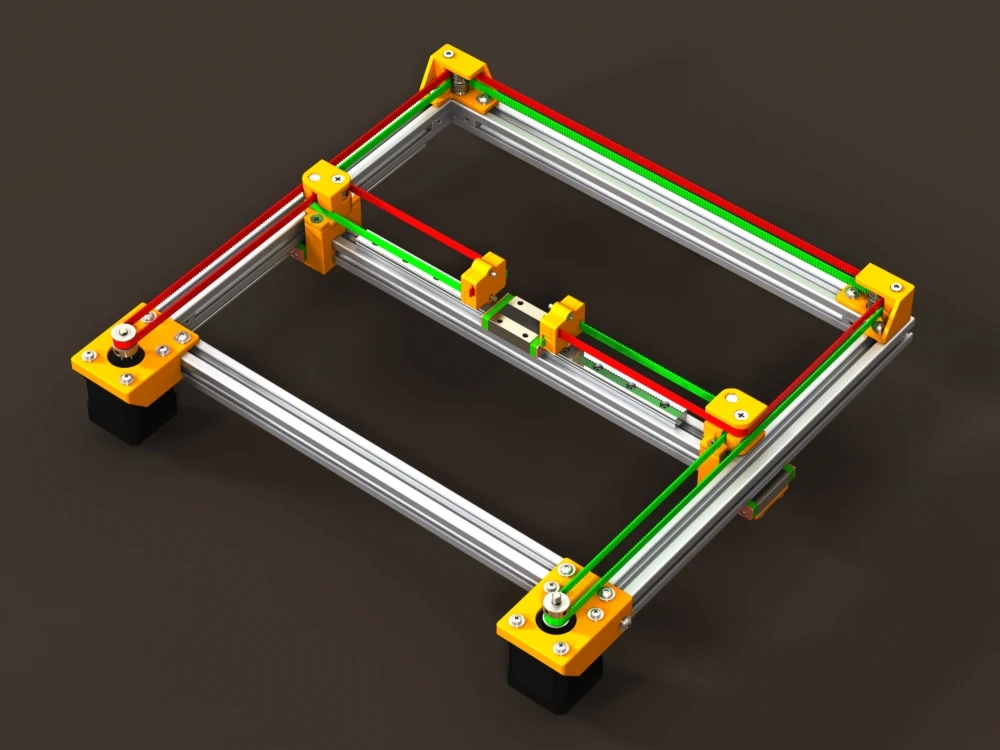 Includes:Air duct (1 pcs)Screws (2 pcs)
Fits:Guider 2Inventor 2
Includes:Air duct (1 pcs)Screws (2 pcs)
Fits:Guider 2Inventor 2 -
Add to Cart
Air Duct Screw (M3x8 ) Guider 2/2S, Inventor 2, Finder - 2 Pack
PB Select™
Now: $0.79
Air Duct Screw (M3x8) Guider 2/2S, Inventor 2, Finder Holds the plastic air duct in place. Includes: M3x8 screw (2 pcs) Fits:Guider 2Guider 2S HTInventor 2Finder
-
Add to Cart
All Metal Hotend Kit for Flashforge Finder, Guider 2, Inventor 2 | Micro Swiss
Micro Swiss
Now: $37.75
Micro Swiss All Metal Hotend Kit - 0.40mm Includes:0.40mm plated brass wear-resistant nozzle (1 pcs)Heat break (1 pcs)Jam nuts - to aid in removing old hotend (1 pcs) Description:The Micro Swiss all metal hotend allows you to print at much higher.
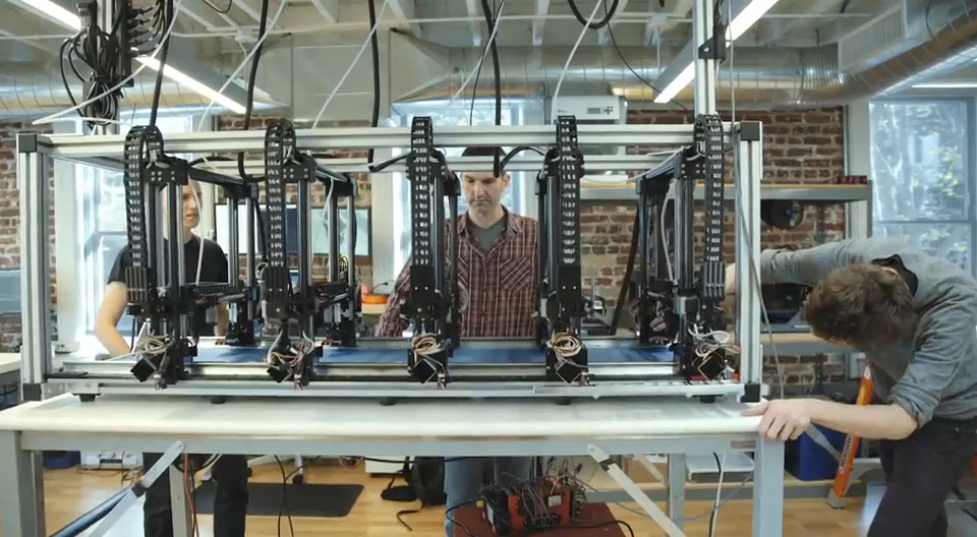 ..
.. -
Add to Cart
Bearing (V Type) for Extruder | Flashforge
Flashforge
Now: $3.99
Flashforge Extruder V Bearing Includes: V bearing (1 pcs) Fits:Adventurer 3Adventurer 4Creator 3Creator 3 ProCreator ProCreator Pro 2Creator MaxCreator Max 2DreamerDreamer NXFinder 2Guider 2Guider 2S HTInventorInventor 2/SMonoprice VoxelRobo...
-
Sold Out - Notify me when back in stock
Bed Leveling Bolt - 3 Pack - Inventor 2/S, Finder/2 | Flashforge
Flashforge
Now: $1.99
Flashforge Bed Leveling Bolt - 3 Pack Includes: Bolts (3 pcs) Fits: Inventor 2Inventor 2SFinderFinder 2 Note: Does not include Bed Leveling Thumb Nuts or Bed Leveling Springs.
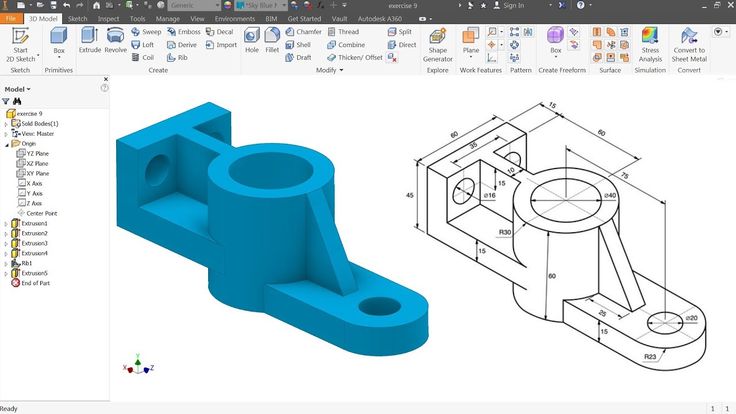
-
Add to Cart
Bed Leveling Card | Flashforge
Flashforge
Now: $2.90
Flashforge Bed Leveling Card Includes: Leveling card (1 pcs)
-
Add to Cart
Bed Leveling Sensor Switch - Guider 2/S HT, Inventor 2, Finder/2 | Flashforge
Flashforge
Now: $12.95
Flashforge Bed Leveling Sensor Switch Includes: Bed leveling sensor (1 pcs) Fits:Guider 2Guider 2S HTFinderFinder 2Inventor 2Inventor 2S Note: This is the sensor only and does not include the arm or servo.
-
Add to Cart
Bed Leveling Servo Assembly - Finder 2, Inventor 2 | Flashforge
Flashforge
Now: $21.
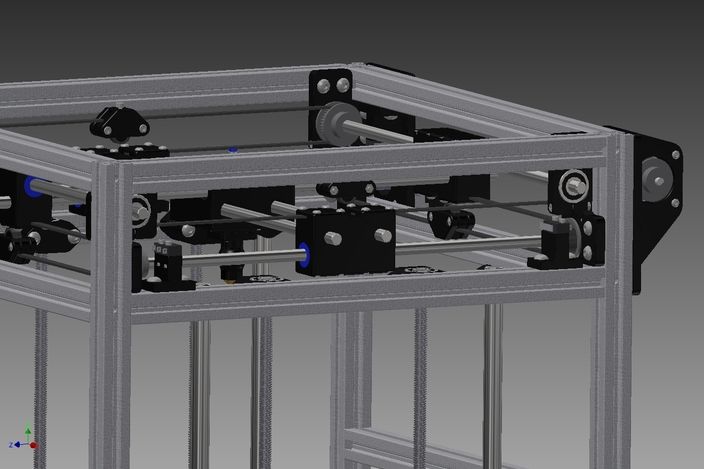 95
95Flashforge Servo Assembly Includes: Servo assembly (1 pcs)Limit switch (1 pcs)Bracket (1 pcs) Fits: FinderFinder 2Inventor 2Inventor 2S
-
Add to Cart
Bed Leveling Thumb Nut - 3 Pack | Flashforge
Flashforge
Now: $5.49
Flashforge Bed Leveling Thumb Nut - 3 Pack Includes: Thumb nut (3 pcs) Fits:InventorInventor 2Finder 2Creator ProCreator Pro 2Creator MaxCreator Max 2DreamerDreamer NX
-
Add to Cart
Belt (Short) 250mm | Flashforge
Flashforge
Now: $5.99
Flashforge Timing Belt This is the short belt that runs from the Y axis stepper motor to the Y axis drive shaft Includes: Belt (1 pcs) Size: 250mm Fits: Creator ProCreator MaxDreamerDreamer NXFinderFinder 2InventorInventor.
 ..
..
How Chuck Hull Invented 3D Printing / Habr
3D printing was born in 1983, long before people began to massively use the World Wide Web. But the Internet has long become an ordinary part of life, and additive technologies still cannot be called widespread.
At the same time, Chuck Hull, the inventor of 3D printing, believes that we have already passed the period of hype and are only now beginning to understand the real field of application of the technology. This post is about how Chuck (Charles) Hull invented and patented laser stereolithography in a small utility room and how he now evaluates his invention. nine0003
Spoiler: like industrial robots, the automotive industry has greatly helped the development of 3D printing.
Table tops and prototyping
It all started in the 80s. Then Chuck worked as a technologist in California Ultra Violet Products. The company produced UV curing resin for countertops. There was no question of high speed of work - it took months to develop and test even small details. Chuck's responsibilities, as responsible for organizing the production process, included prototyping. The inventor was looking for a method that would allow him to speed up the process. nine0003
There was no question of high speed of work - it took months to develop and test even small details. Chuck's responsibilities, as responsible for organizing the production process, included prototyping. The inventor was looking for a method that would allow him to speed up the process. nine0003
One of his ideas was to apply several hundred layers of plastic and shape them using ultraviolet light. This would make for a relatively cheap and quick prototype. With this idea, he went to the leadership of the UVP. Chuck, of course, was not allowed to invent during working hours - but they were given a room and equipment.
After a year of overtime, the inventor created the first prototype of an electrolytic 3D printer. He worked with a photopolymer, a substance that can change from liquid to solid under the influence of ultraviolet rays. Hull learned how to write code to program a printer to create a prototype of a particular geometric shape. The first 3D printed object was a small plastic cup. nine0003
nine0003
First SLA-1 3D Printer
Get Dressed and Come to the Lab Now
The night when the discovery was made was forever imprinted in the memory of Chuck's wife, Antoinette Hull. In an interview for The Telegraph, she even gives the exact time - 20:39 on Wednesday, March 9, 1983.
“I was at home that night and had to look at my watch when the phone rang,” she said. "I was already in my pajamas and getting ready for bed, but Chuck was still working." nine0003
"Get dressed and come to the lab right away," Chuck said on the phone. She got into her car and drove to the lab, a small room that Ultra Violet Products had given Hull for research.
In it, Antoinette saw the first 3D printed object in the world. “Holding this strange detail in his hand, he said that he had done it and the world would never be the same. That night, I knew he had achieved something great.”
Chuck Hull and his wife
Chuck's company didn't have the funds to finance development. He recalls: “I received a patent for a 3D printer in 86. And so I come to the head of the company and say: “We need to find a commercial application for this.” To which he replies, “Sure, but we can’t afford it.” I had no choice, so I decided to start my own company. This was the start of 3D Systems." The first clients of his company were General Motors and Mercedes-Benz. nine0003
He recalls: “I received a patent for a 3D printer in 86. And so I come to the head of the company and say: “We need to find a commercial application for this.” To which he replies, “Sure, but we can’t afford it.” I had no choice, so I decided to start my own company. This was the start of 3D Systems." The first clients of his company were General Motors and Mercedes-Benz. nine0003
The company is still operating. Chuck, now 79, does too. “My job is too interesting to quit,” he once said in an interview with CNN. In another, he gave more details: “In the late 90s, I really retired. A new manager took my place, and about three months later he called me and said, “Chuck, it's bad. Can you come back and help with some technical issues?” Since then, I've been there again, continuing to do interesting things."
3D Systems is currently focusing on programmable injection molding systems that will allow objects to be printed without first having to design molds. In addition to his work at 3D Systems, Chuck gives lectures and speaks at conferences.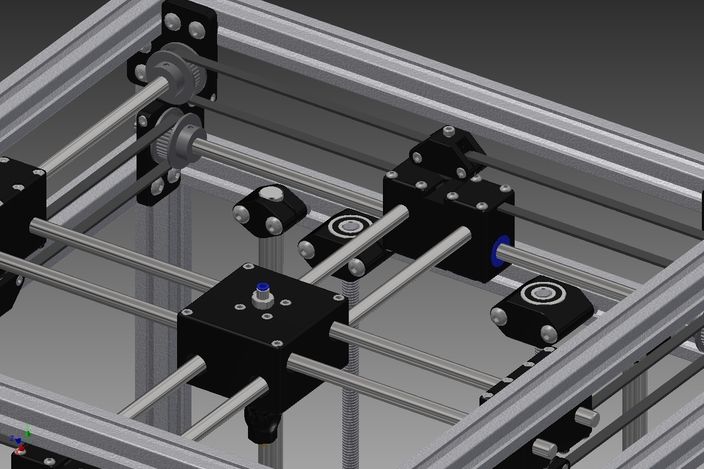 For example, he became one of the main speakers at last year's ASME - International Mechanical Engineering Congress.
For example, he became one of the main speakers at last year's ASME - International Mechanical Engineering Congress.
Chuck Hull remains a very humble person. In 2014, the European Patent Office presented him with a prize for the best inventor working outside of Europe. To this he replied only: “I am pleased to receive recognition of my merits. I've worked hard and hard, and that's what I'm going to do next." nine0003
He rarely interacts with the media. Below is one of his few interviews given to Industry Week. It is from 2013, but has not been fully translated into Russian. In it, Chuck Hull told how he himself did not believe in the commercial success of his invention for a long time and about whether it could ever compete with traditional production.
You invented stereolithography in 1983. After 30 years, the market for additive manufacturing began to grow rapidly. People think that this is some kind of new phenomenon. What do you think about this boom? Did it start too late? nine0047
When we first started doing 3D printing, I never imagined that it would become so popular.
It seemed to me that this path would take 25 years, if not more. Such is the history of all inventions. It doesn't happen that you invent something like a 3D printer and a crowd of buyers immediately starts to beat on your door. It takes a long time to understand what you have invented and how it can be improved.
3D printing isn't easy. You see the finished device. You think that it is very easy to use it, but it is not. We at 3D Systems have been perfecting the first printer for 10 years. During this time, we managed to go from an idea to the implementation of a finished device in the industrial sector. nine0003
But the last few years have surprised me. It certainly came as a surprise that people recognized 3D printing as mainstream.
When did you get the idea to create 3D printing? How did you come up with the stereolithography method?
I started out as a design engineer. The development of new plastic injection moldings that we were engaged in was a very laborious and costly process.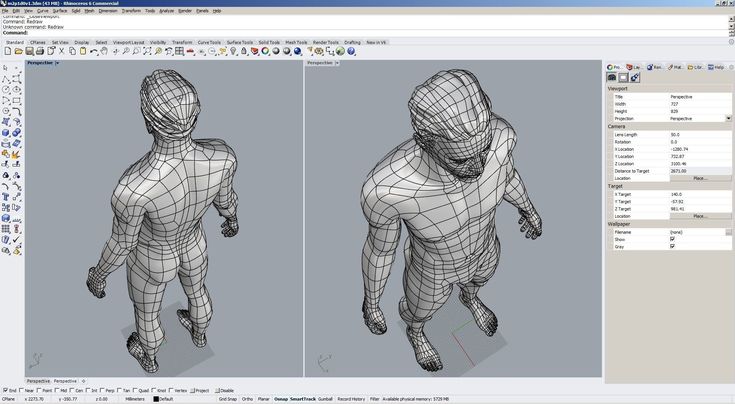 In the beginning, you designed the look of the part, made drawings, discussed everything with the toolmaker who made the mold for the plastic part. Then this form was sent to the caster, who made the spare part. The whole process took 6-8 weeks. nine0003
In the beginning, you designed the look of the part, made drawings, discussed everything with the toolmaker who made the mold for the plastic part. Then this form was sent to the caster, who made the spare part. The whole process took 6-8 weeks. nine0003
It took a long time to make, and the first piece that came out was never perfect. It had to be redone and the production cycle started again. Many months passed before you received a part that you can test.
Naturally, we tried to do something about it.
I decided to see if I could think of a way to get that first part faster, so that all iterations would go through quickly, and then quickly get the final version for production. nine0003
I went through a bunch of ideas that didn't work and then came up with what ended up being stereolithography. On March 9, 1983, I produced the first part with this method.
Then you applied for a patent in 1986 and co-founded 3D Systems. But who were your clients? Did any of the industries see the potential at such an early stage?
When we first launched the company, we immediately sent “scouts” to see if there was any interest from the industry. And he was. In fact, interest in prototyping has been huge, mostly from automakers. nine0003
And he was. In fact, interest in prototyping has been huge, mostly from automakers. nine0003
Car companies at that time were trying to produce high quality cars. American concerns at that time were rather clumsy. They could not quickly release new models, and the quality of production lost in the global competition.
So they had a huge interest in any technology that could improve the situation. We immediately began to move in this direction, to develop technology for the automotive industry. Shortly thereafter, many manufacturers followed the same path. nine0003
Also in those years we developed methods for prototyping metal parts. Our technology was supposed to offer an alternative to traditional lost wax casting, and it was the first major offshoot of prototyping plastic parts.
We called the developed method Quick Cast. It allowed the rapid casting of metal parts from a variety of alloys and is still in use today. Mainly in the aerospace and related industries.
Now that manufacturers and consumers have realized the full value of 3D printing, what's next? Will it ever be able to compete with traditional production?
I'm not a futurist and I don't have a predictor's crystal ball - I don't know what's going to happen next. But I know that when enough smart people work on something, it always gets better.
The main advantages of additive technologies now are fine-tuning and the ability to work with complex structures. If your manufacturing process needs a lot of parts, or you need parts with many different parameters, 3D printing can come in handy. nine0003
Medical applications come naturally to 3D printing, because every body is different. When you try to do something for teeth, for example, that thing will be different for different patients. The same goes for the knees and other joints.
If you're looking into the future of 3D printing, it's probably parts with complex shapes and patterns, even at high production volumes.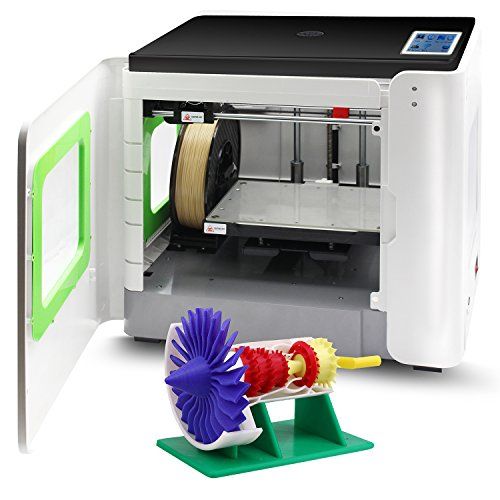 The speed and economic benefits of 3D printing are constantly increasing. This means that it has more and more chances to compete with traditional production. nine0003
The speed and economic benefits of 3D printing are constantly increasing. This means that it has more and more chances to compete with traditional production. nine0003
Looking back over these 30 years, what would you say is your biggest achievement outside of the technology itself?
Back in the 1980s and 1990s, it was clear that production would gradually leave the country. This concerned not only the United States - everyone went to countries with cheap labor. I always thought it was bad. In my opinion, manufacturing should be a key capability, especially for the US. Today, the return to production in the country is associated with higher technological capabilities. I love that 3D printing and digital manufacturing make this possible. nine0003
On October 12-13, we will hold an exhibition of additive technologies and 3D scanning - 3D Print Expo in Moscow. It will be the sixth in a row.
This time we changed the format and focused on practice. There will be no conference this year - there will be an exhibition and a lecture hall.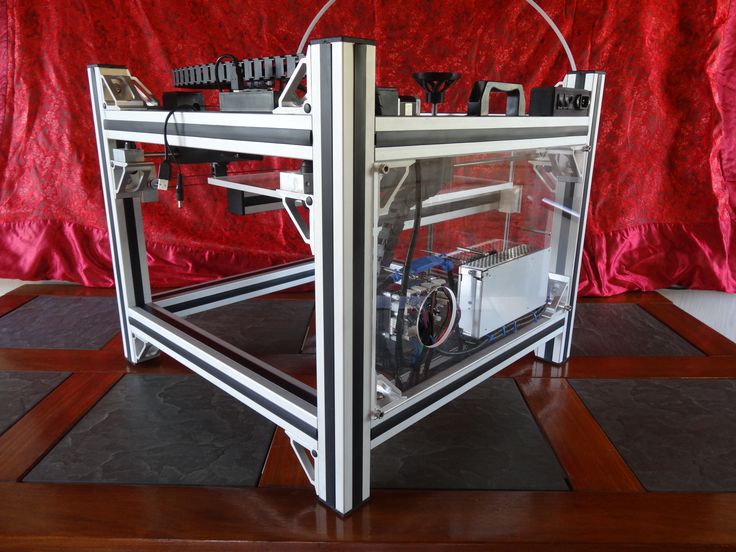 Of course, there will be workshops, a gallery of 3D printed objects and drawing with 3D pens.
Of course, there will be workshops, a gallery of 3D printed objects and drawing with 3D pens.
Look for details and the program on the official website.
Brief history of 3D printing / Sudo Null IT News0001
3D printing was born 40 years ago and has opened up amazing possibilities for creating various models in prototyping, dentistry, small-scale production, customized products, miniatures, sculptures, mock-ups and much more.
Who invented the 3D printer? What was the first 3D printing technology? And what was the first thing they printed on a 3D printer? Let's open the veil of secrecy over a huge number of interesting facts and stories about the emergence of technology.
So, how it all began…
Stage 1: The birth of an idea
Dr. Hideo Kodama, creator of the rapid prototyping system (1980)Dr. Nagoya Municipal Industrial Research Institute, Hideo Kodama formed a rigid object of photopolymer resin.
In fact, he described a modern photopolymer printer, but failed to provide the necessary data for patent registration within a year, as required by patent law, and abandoned the idea. However, in many sources it is he who is called the inventor of 3D printing technology. nine0003
However, in many sources it is he who is called the inventor of 3D printing technology. nine0003
In 1983, three engineers - Alain Le Meho, Olivier de Witt and Jean-Claude André from the French National Center for Scientific Research, in an attempt to create what they called a "fractal object", came up with the idea of using a laser and a monomer, which, under the influence of a laser, turned into a polymer. They applied for a patent 3 weeks before the American Chuck Hal. The first object created on the apparatus was a spiral staircase. Engineers called the technology stereolithography, and the patent was approved only in 1986 year. Thanks to them, the most famous file format for 3D printing is called STL (from the English stereolithography). Unfortunately, the institute did not see any prospects in the invention and its commercialization, and the patent was not used to create the final product.
Chuck Hull, Inventor of SLA Laser Stereolithography At the same time, Chuck Hull was working for a company that made countertop and furniture coatings using UV lamps.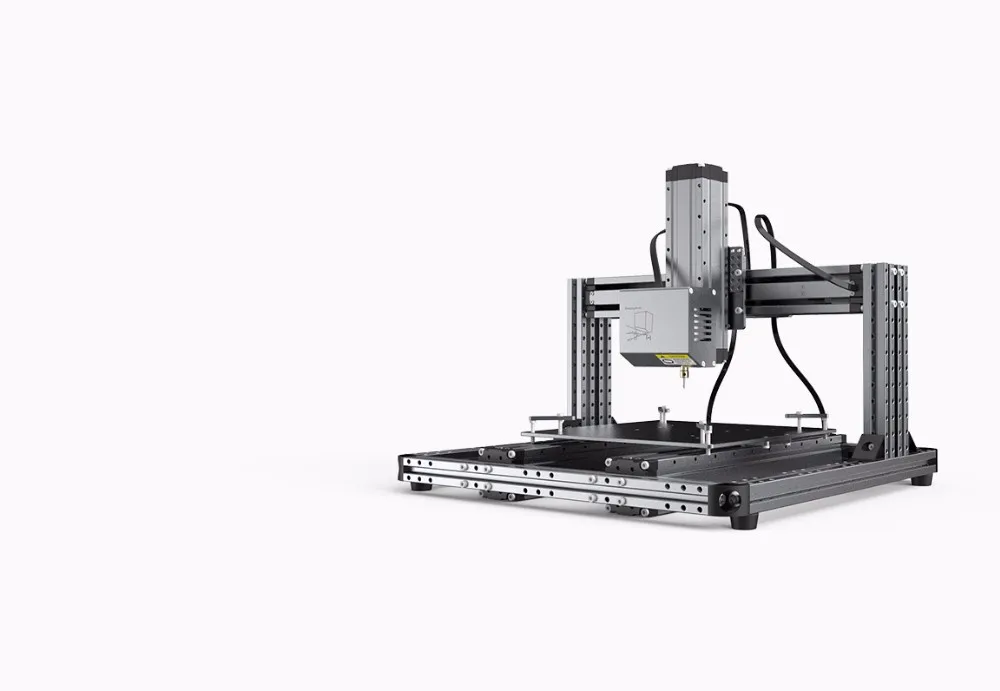 The production of small plastic parts for prototyping new product designs took up to two months. Chuck came up with the idea to speed up this process by combining UV technology and layering thin plastic. The company gave him a small laboratory for experiments, where he worked in the evenings and weekends. As a material, Chuck used acrylic-based photopolymers that harden under the influence of ultraviolet radiation. One night, after months of experimentation, he was finally able to print a sample and was so elated by luck that he walked home. Chuck showed his invention to his wife. It was an eyewash cup, more like a communion cup, according to the wife. It is considered officially the first 3D printed model in the world and is still kept by the Hull family, and after their death will be transferred to the Smithsonian Research Institute in Washington. nine0003 Hull Cup
The production of small plastic parts for prototyping new product designs took up to two months. Chuck came up with the idea to speed up this process by combining UV technology and layering thin plastic. The company gave him a small laboratory for experiments, where he worked in the evenings and weekends. As a material, Chuck used acrylic-based photopolymers that harden under the influence of ultraviolet radiation. One night, after months of experimentation, he was finally able to print a sample and was so elated by luck that he walked home. Chuck showed his invention to his wife. It was an eyewash cup, more like a communion cup, according to the wife. It is considered officially the first 3D printed model in the world and is still kept by the Hull family, and after their death will be transferred to the Smithsonian Research Institute in Washington. nine0003 Hull Cup
Chuck Hull filed a patent application on August 8, 1984 and was approved on March 11, 1986. The invention was called "Apparatus for creating three-dimensional objects using stereolithography.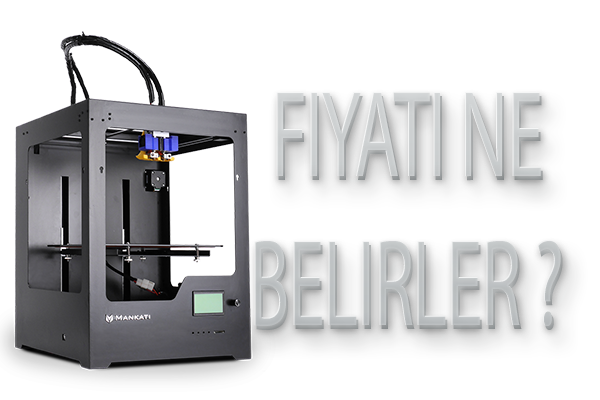 " Chuck founded his own company - 3D Systems, and in 1988 launched the first commercial 3D printer - the SL1 model.
" Chuck founded his own company - 3D Systems, and in 1988 launched the first commercial 3D printer - the SL1 model.
Another new 3D printing method appeared around the same time as SLA printing. This is selective laser sintering SLS , which uses a laser to turn loose powder (instead of resin) into a solid material. was developed by Carl Deckard , a young undergraduate student at the University of Texas at Austin, and his professor, Prof. Dr. Joe Beeman . And the idea belonged to Karl. In 1987, they co-founded Desk Top Manufacturing (DTM) Corp. However, it will take at least another 20 years for SLS 3D printing to become commercially available to the consumer. In 2001, the company was bought out by Chaka Hull, 3D Systems. nine0003 Scott Crump, developer of FDM 3D printing (1988)
Surprisingly simpler and cheaper 3D printing FDM (Fused Deposition Modeling) was created after SLA and SLS, in 1988. Its author was aeronautical engineer Scott Crump . Crump was looking for an easy way to make a toy frog for his daughter and used a hot glue gun to melt the plastic and pour it into layers. Thus, the idea of FDM 3D printing was born, a technology for layer-by-layer deposition of a plastic thread. Crump patented a new idea and co-founded Stratasys with his wife Lisa Crump at 1989 year. In 1992, they launched their first production product, the Stratasys 3D Modeler, on the market.
Its author was aeronautical engineer Scott Crump . Crump was looking for an easy way to make a toy frog for his daughter and used a hot glue gun to melt the plastic and pour it into layers. Thus, the idea of FDM 3D printing was born, a technology for layer-by-layer deposition of a plastic thread. Crump patented a new idea and co-founded Stratasys with his wife Lisa Crump at 1989 year. In 1992, they launched their first production product, the Stratasys 3D Modeler, on the market.
Milestone 2: 3D printing becomes available
The first machines built by 3D Systems and Stratasys were bulky and expensive. The cost of one was hundreds of thousands of dollars, and only the largest companies in the automotive and aerospace industries could use them. Printers had a lot of limitations and could not be widely used. The development of technology has been very slow. 20 years later, in 2005, the RepRap (Replicating Rapid Prototyper) project appeared - a self-replicating mechanism for rapid prototyping. nine0003
nine0003
It was inspired by Dr. Adrian Bauer from the University of Bath in the UK. The goal of the project was to "self-copy", replicate the components of the 3D printers themselves. In the photo, all the plastic parts of the "child" are printed on the "parent". But in fact, a group of enthusiasts led by Adrian were finally able to create the budget 3D printer for home or office use.
The idea was quickly taken up by three New York technologists and started a desktop FDM printer company, MakerBot. This was the second turning point in the modern history of 3D printing. nine0003
Other technologies were being developed in parallel. One of them is bioprinting. Thomas Boland of Clemson University has patented the use of inkjet printing to 3D print living cells, making it possible to print human organs in the future. Dozens of companies around the world conduct research in this area.
Another important application of the new technology was the creation of prostheses, first conventional, and then bionic.



